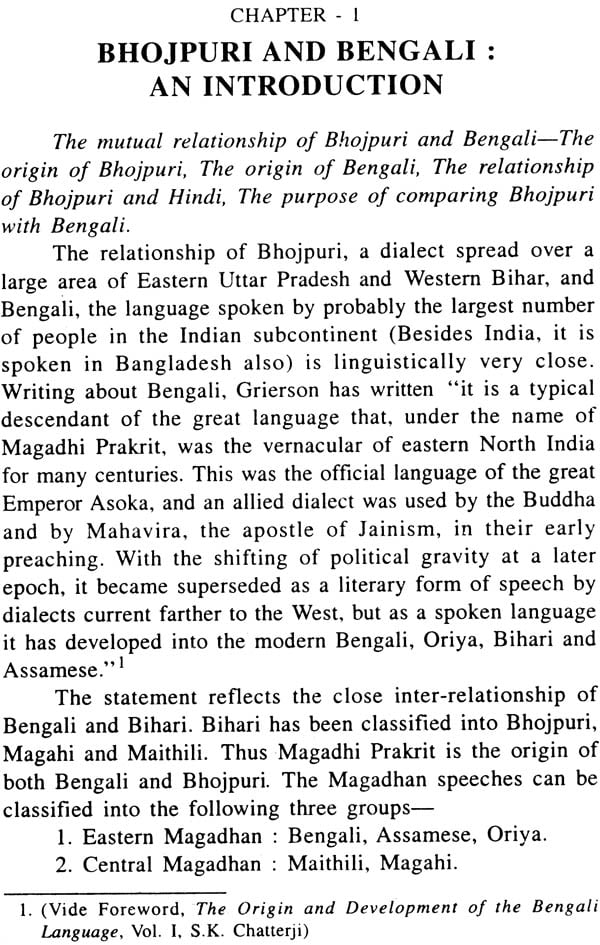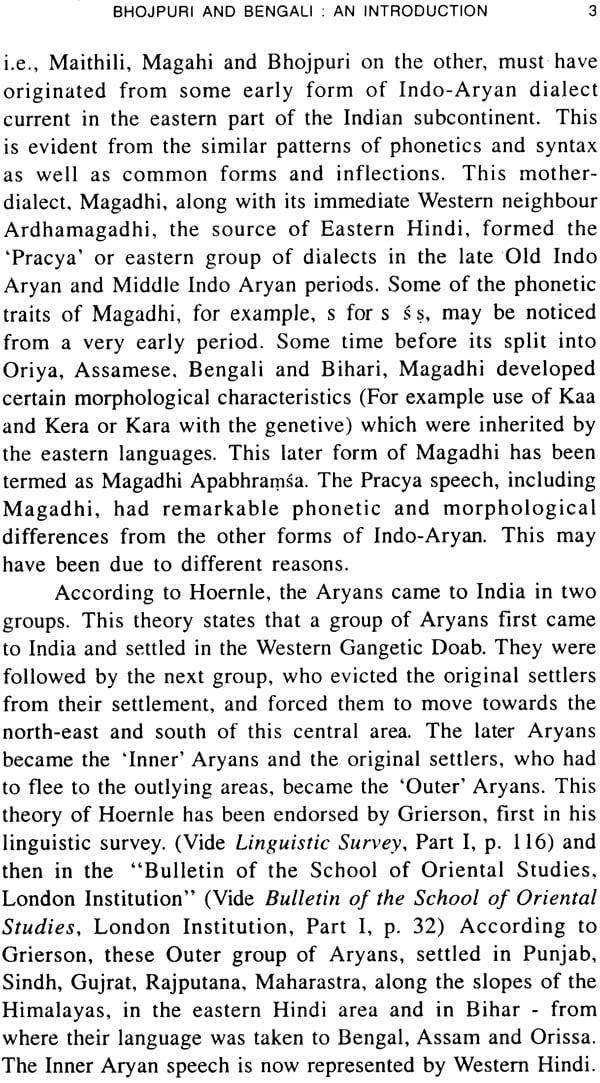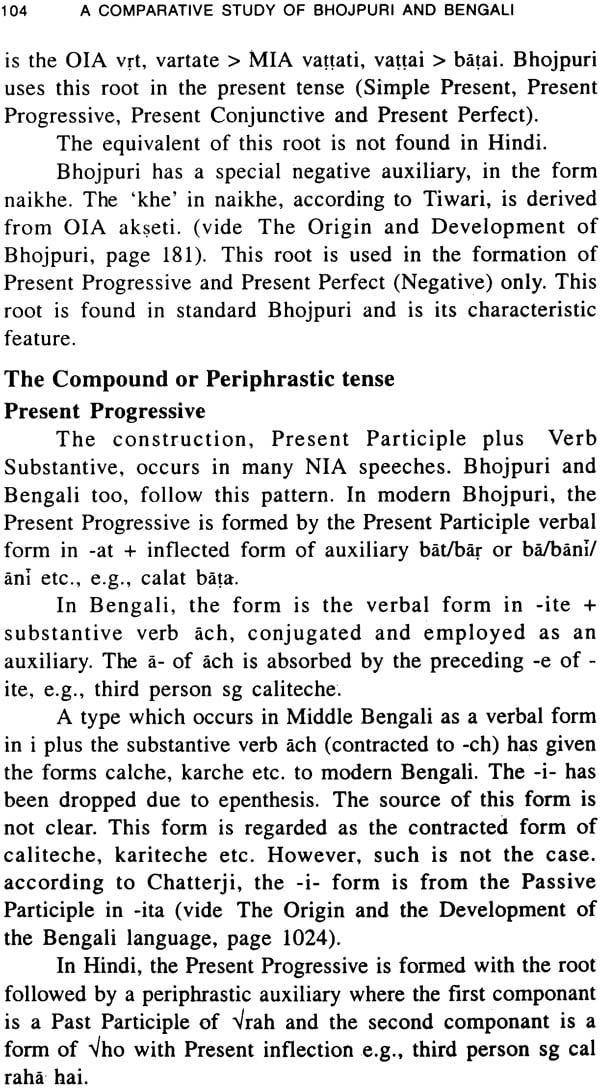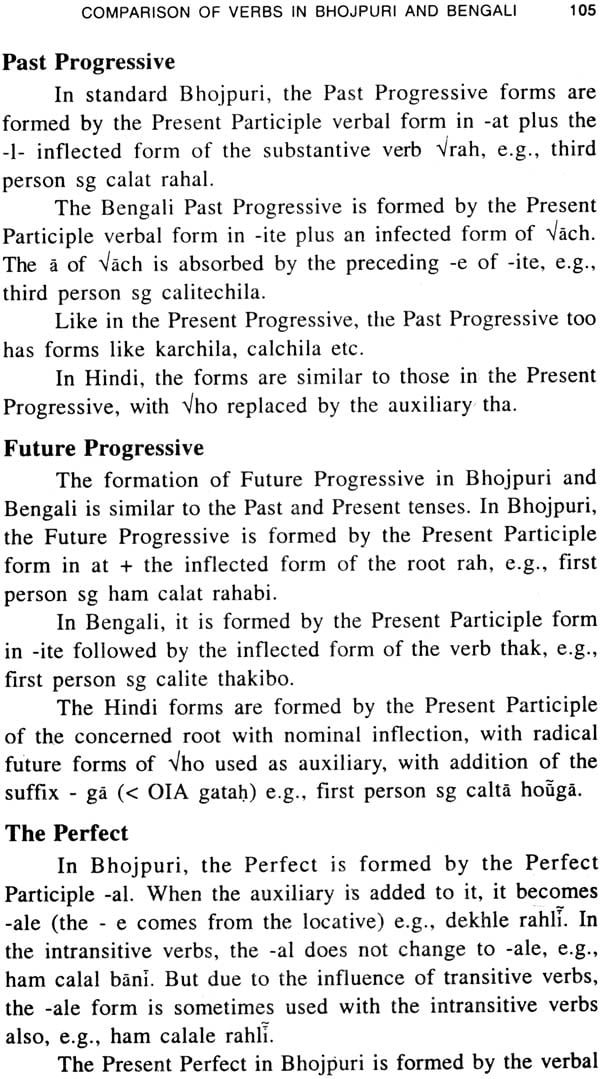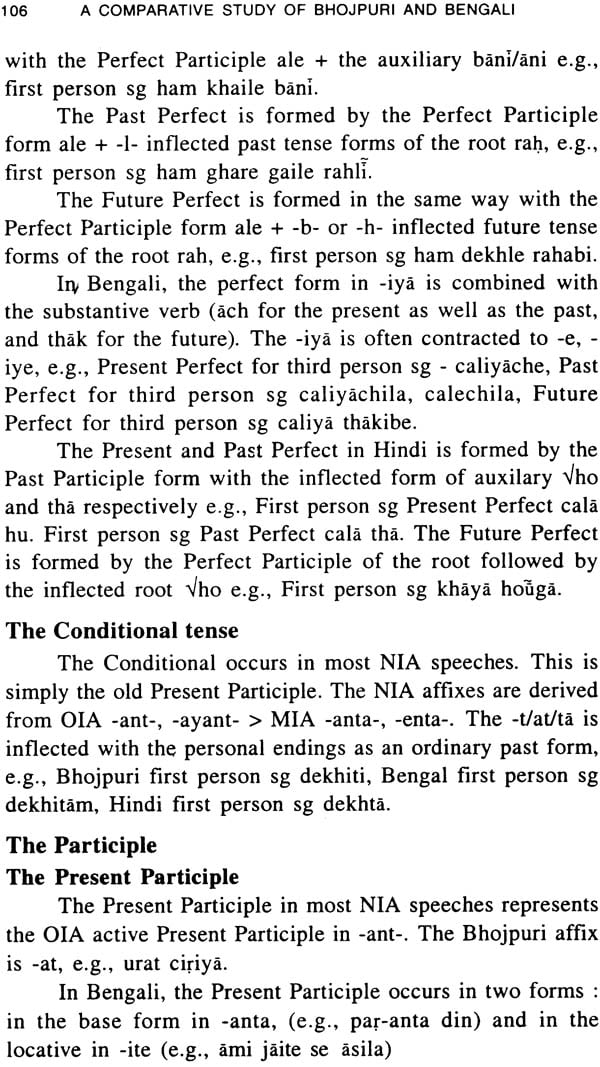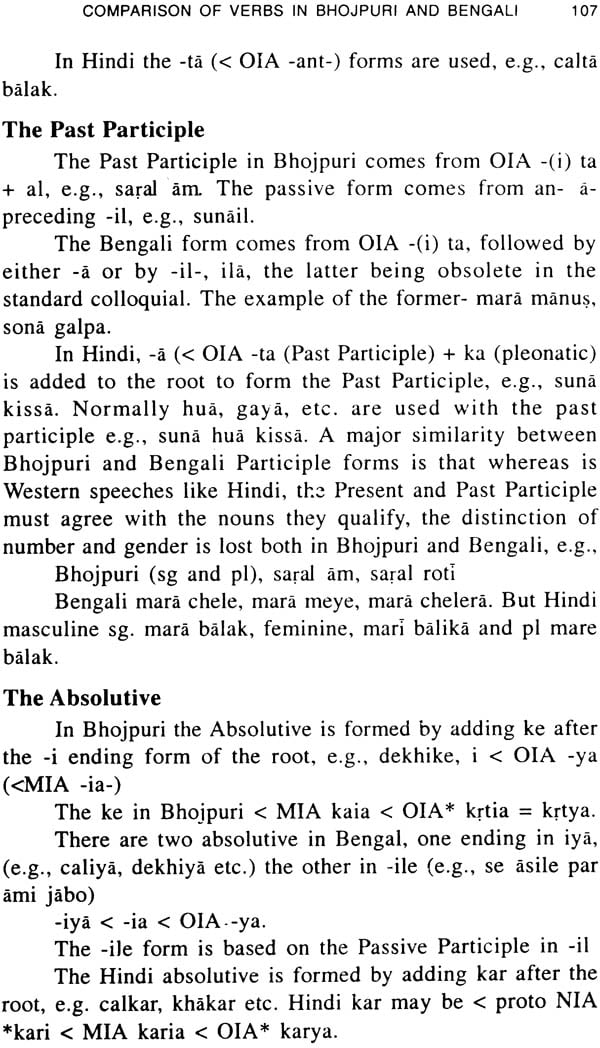
Comparative Study of Bhojpuri and Bengali (A Rare Book)
Book Specification
| Item Code: | NAH123 |
| Author: | Dr. Mrs. Shruti Pandey |
| Publisher: | Vishwavidyalaya Prakashan, Varanasi |
| Language: | English |
| Edition: | 2003 |
| ISBN: | 8171243436 |
| Pages: | 144 |
| Cover: | Hardcover |
| Other Details | 8.5 inch x 5.5 inch |
| Weight | 250 gm |
Book Description
I have tried to investigate in this book, the relationship between Bhojpuri and Bengali. Since Bhojpuri and Bengali are the descendants of the same source, Magadhi Prakrit, their comparative study is significant. The speeches originating from Magadhi Prakrit have been classified into three groups:
1. Eastern Magadhan - Bengali, Assamese, Oriya
2. Central Magadhan - Maithili, Magahi
3. Western Magadhan - Bhojpuri with Nagpuri or Sadani Whereas Bengali is the language spoken by the largest number of people in the Indian subcontinent, being spoken in Bangladesh as well as West Bengal, Bhojpuri is a dialect spoken in a widespread area spread over Eastern Uttar Pradesh and Western Bihar.
While the Bhojpuri area is closely related to Uttar Pradesh in terms of society and culture, it has close affinity with Bengal in terms of language. But there has been no consciousness among the people of Bengal and Bihar that their language has originated from the same source. On the contrary, Bihar is considered today to be a part of the so- called Hindi-belt.
The book has been divided into ten chapters. The first chapter gives an introduction of both the speeches, their origin and mutual relationship and the purpose of comparing them. The second and third chapters give the comparative study of the phonology of the two speeches.
Chapter III to IX deal with the morphology of the two speeches, i.e., the nominal declension, the pronoun, the numeral, the verb, the prefix, the indeclinable and the suffix. E.g., in phonology, a major point of similarity between Bhojpuri and Bengali is the rounded pronunciation of (a). Grammatical gender has been preserved in all New Indo- Aryan speeches except the Magadhan speeches. In Bhojpuri, the gender has been partially preserved. In Bengali, the gender distinction is totally lost. Regarding verb, both in Bhojpuri and Bengali-I- is used for the past base and -b- for the future base.
There are many more such features which are common to Bhojpuri and Bengali. However, since the Bhojpuri area has always been under the influence of the western speeches, there are differences too. These similarities and differences have been discussed in the book. The summary and findings have been presented in the tenth and final chapter.
The development of one dialect in particular can be taken up for discussing the development of Bengali, and the dialect that can be taken to be the representative dialect of Bengal: is the dialect of west central Bengal (the standard colloquial), "the dialect par excellence" in the word of Chatterji.
As far as Bhojpuri is concerned, the dialect of Balia is accepted as the standard Bhojpuri by scholars. Therefore, this dialect has been used as the standard Bhojpuri in this book.
The Khariboli form of Western Hindi, which is accepted as the National Language, has been referred to as Hindi and not Khariboli in the book.
I am indebted to all the thinkers, authors and linguists whose views I have studied and quoted in this book. I wish to pay my highest and sincere regards to my respected teacher Late Prof. Satya Swarup Misra for his constant help and support.
I cannot express in words, my gratitude to my honourable mother Prof. Sheila Mookherjee for her encouragement and moral support imparted to me at every step.
It is my pleasure to express my gratitude to my husband Dr. M.P. Pandey for his noble cooperation and inspiration.
Finally, I express gratitude to all my family members and friends for their contribution.
| Preface | iii | |
| 1 | Bhojpuri and Bengali: An Introduction | 1 |
| 2 | Comparison of Bhojpuri and | |
| Bengali Vowels | 17 | |
| 3 | Comparison of Bhojpuri and | |
| Bengali Consonants | 37 | |
| 4 | Comparison of Nominal Declension | |
| in Bhojpuri and Bengali | 47 | |
| 5 | Comparison of Pronoun in Bhojpuri | |
| and Bengali | 58 | |
| 6 | Comparison of Numerals inBhojpuri | |
| and Bengali | 75 | |
| 7 | Comparison of Verb in Bhojpuri and Bengali | 84 |
| 8 | Comparison of Prefix and Indeclinable | |
| in Bhojpuri and Bengali | 108 | |
| 9 | Comparison of Suffix in Bhojpuri | |
| and Bengali | 112 | |
| 10 | Conclusion | 121 |
| Select Bibliography | 132 | |
| Appendix | 133 |
